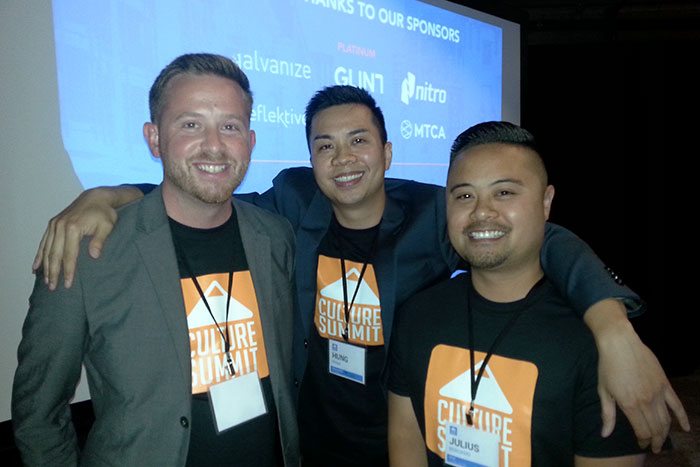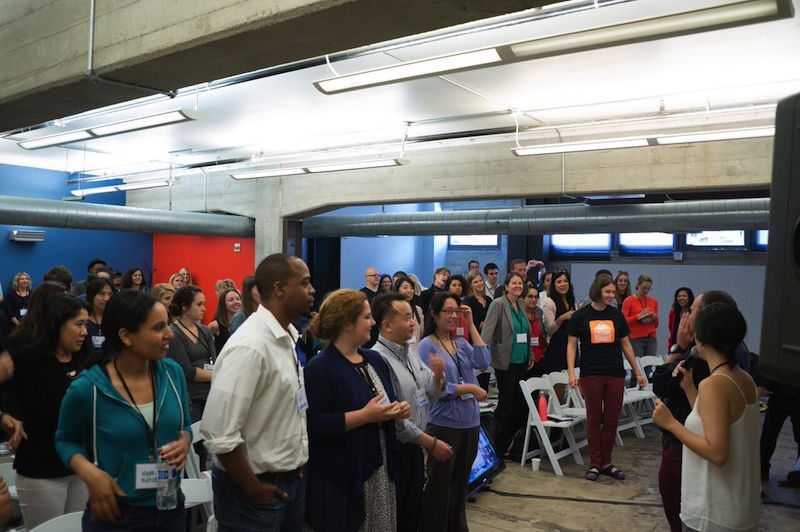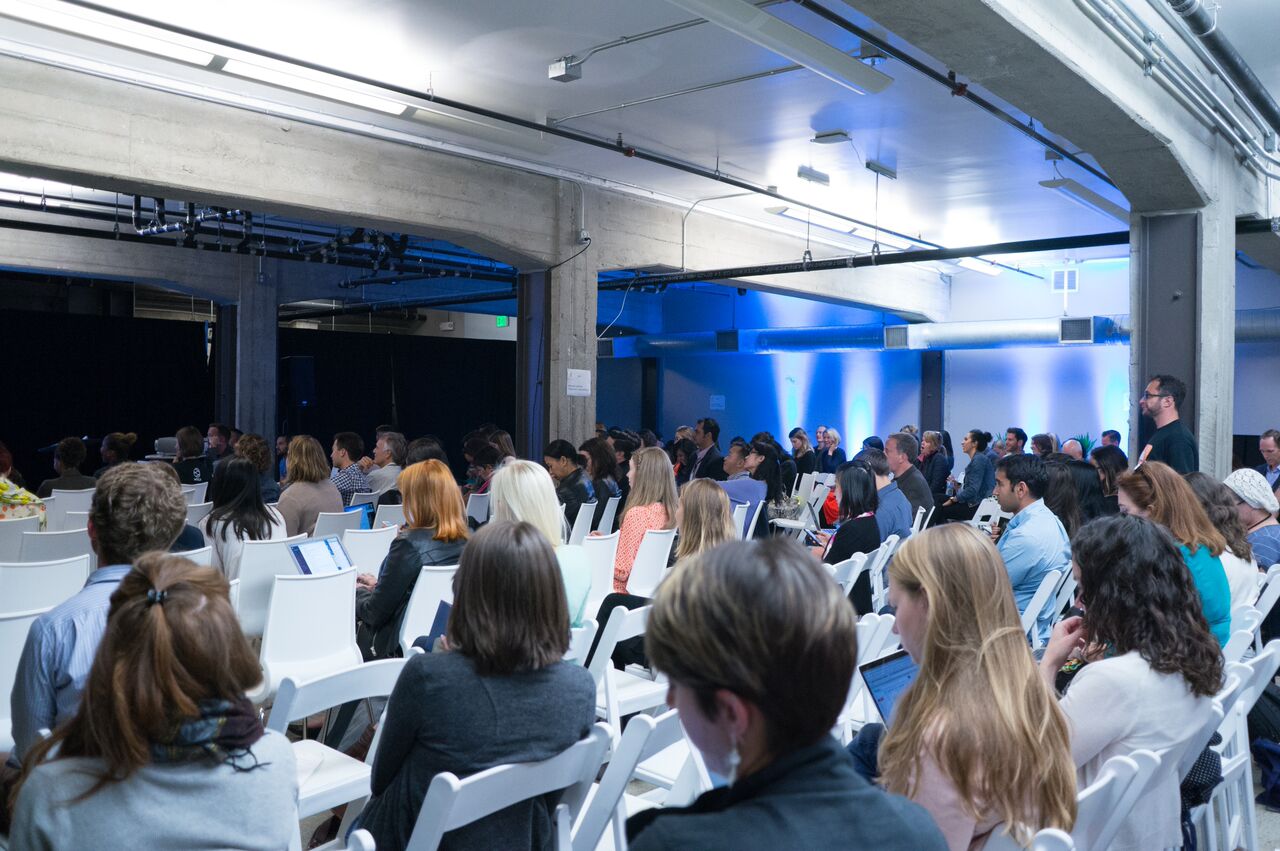Key Takeaways From the Inaugural Culture Summit

I worked in a company for five years. In that time, it grew from around 100 employees to nearly 500. For a while, working there was amazing. The environment was engaging, the perks were fun, and we all felt truly valued.
As the company quickly grew, something was lost and I couldn’t quite put my finger on it. We were receiving the same perks, the office environment was pretty much the same, and our managers continued to tell us they valued us. But, it wasn’t the same. Morale was down and the general experience of working there was full of peaks and valleys.
I didn’t realize it at the time, but as the company scaled, the culture didn’t scale with it. This resulted in a small, select group of excessively happy and involved team members and a large group of disengaged employees. Not exactly a recipe for a successful culture.
Just last week, I had an opportunity to finally understand why—why morale had dropped, why the company struggled to scale its culture, and why I was so excited when a new job opportunity elsewhere arose.
Enter Culture Summit

The idea of company culture has become more of a focal point in recent years. One of the first questions a number of job-seekers ask of a company is what their culture is like. On the flipside, companies are aiming to hire people who they feel will fit within their culture.
Culture Summit, a full day conference on culture, was a place to “get beyond the fluff and dive into the data, strategies, and practices that take [culture] from soft skills to actual results.” Hung Pham, the driving force behind this year’s inaugural event, has more experience as a disengaged employee than he’d like. In fact, that’s exactly what inspired him to bring Culture Summit to life. Thanks to his dedication and the efforts of Julius Bercasio and Damien Foord of MTCA, Culture Summit became a reality on June 26, 2015.
Office Ninjas and Culture

Whether your title is Office Manager, Administrative Assistant, Vibe Manager, or Executive Assistant, you know you have a hand in your office culture. A company’s culture is a massive driver of business performance, and it’s up to you to help build, retain, and change your culture into something sustainable, something that truly represents why your company is in business other than just making money.
Culture is Being Authentic
“I’ve worked at places that on the surface were cutting edge and seemed to have a really ‘cool’ company culture [but] that turned out to be fear and compliance based. And I’ve worked at places that were huge, enterprise-level places to work where I’ve had some great experiences.” – Elizabeth, Virtual Assistant Consultant
Culture is more than the perks and benefits your company offers; it’s more than your core value buzzwords; and it’s more than the actions of your brand. Your company culture is defined by the people who make up your company and strongly driven by your purpose as a brand.
It’s not what you do, it’s why you do it—it’s the beliefs you hold as a brand that lead you to take those actions.
Didier Elzinga of Culture Amp asked exactly the right question, “What do you want the experience of your people to be?”
Changing Culture

“My company is moving and most of our employees have been here 25+ years, so things are still kind of stuck back in time. I forwarded this article to my Chairman as our new office needs to have a totally different culture than the one we presently have.” – Barbara, Executive Assistant
Changing the culture of a company is hard. Really hard. 70% of culture-based initiatives fail. Natalie Baumgartner, Chief Psychologist at RoundPegg, knows why—they weren’t measured, managed, or monitored. In order to make a change, you need to understand your starting point and where you want to be.
First, know the difference between your Aspirational Culture (the public values littered throughout your company’s mission statement) and your Actual Culture (the real core values held by the individuals who make up the company). Then, create a roadmap to bridge the gap between your Aspirational and Actual Cultures.
Employee Culture Fit
“When a new hire comes on board an email goes out to the department. I think everyone in the office is so busy with their day to day jobs that they don’t take time to truly welcome people.” -Jennifer, Office Manager
Culture starts before a new employee’s first day—it starts with the candidate’s first interaction with your company. Pat Schoof, the VP of HR at Udemy, recommends making sure all candidates leave their interviews with a positive impression and that impression is improved further with quick follow-up.

Allow your company culture to shine and you’ll attract candidates whose personal values are a match for the culture you have built and are continuing to shape. Ellen Leanse, an alum of Apple and Google, suggests hiring for “care.” Find out what your candidates care about, what they’re passionate about, and you’ll gain a deeper understanding of what motivates them and how those values match up with your own company culture.
Culture is a living part of every company and if that culture doesn’t align with its people, you’re going to end up with a lot of disengaged employees, unable to realize their full potential. Culture never goes away. At OfficeNinjas, we’ll continue to share insights into the important role of culture in the workplace and how you can shape it into something truly sustainable.
What’s the culture like in your office?
Nice Article. Also Today everything Based on Culture.
Great article. I have been a part of my company’s culture for nearly 15 years. It has been a privilage to work with people who share the same core values as me. Thank you for the reminder that we must stay up-to-date with the values of our employees, as well as the values of the company.
Great article! and so true. Culture is everything.
Thanks, Suzanne! I definitely have to agree. It had too much bearing on the direction of my career for me to think otherwise!